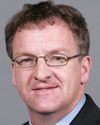Hopefully we're not. I think Indian Affairs in the treaty process should recognize that these harbours are valuable assets to the first nations community, and they should be part of the process, rather than their understanding or their hope that DFO will continue to maintain and update them after the treaty process is settled.
Evidence of meeting #4 for Fisheries and Oceans in the 39th Parliament, 2nd Session. (The original version is on Parliament’s site, as are the minutes.) The winning word was authority.
A recording is available from Parliament.




